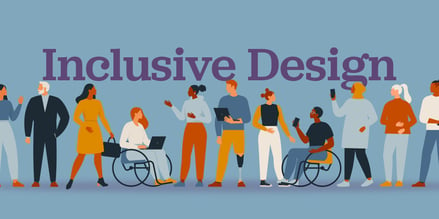
A 2-part series focusing on adopting an inclusive mindset in the workplace.
Innovation in manufacturing involves a constant race to make things faster and cheaper, but what if the key to truly groundbreaking manufacturing lies in understanding the human experience?
Equity through Empathy has the potential to transform the industry by fostering inclusive environments and outputs that address varied needs. Adopting this inclusive mindset can lead to products, services, and workplaces that excel in the marketplace, boost productivity, and maintain job stability. At its essence, this approach involves integrating inclusivity into every facet of a company's work and workplace.
The Heart of Inclusive Design
Inclusive design is about making informed design decisions, by better understanding user diversity, which helps to include as many people as possible. 1 Inclusive design in manufacturing means prioritizing the development of an approach that ensures that products and services cater to a broad spectrum of users, expanding market reach and enhancing satisfaction. Internally, inclusive design entails cultivating workplace practices that embrace diversity, equity, and inclusivity among staff, promoting a culture of respect and belonging.
Empathy: The Core Ingredient
Empathy, often defined as the ability to understand and share the feelings of another, serves as a foundational pillar of inclusive design. It compels us to adopt multiple perspectives, encouraging us to see products and services through the varied experiences of potential employees and customers alike. By genuinely comprehending their unique needs, obstacles, and goals, empathy fosters a design philosophy that is both inclusive and insightful.
Who is Equity through Empathy and Inclusive Design For?
Manufacturers can see if Equity through Empathy and Inclusive Design fits them by evaluating their dedication to creating inclusive environments, products, and services for a wide array of people with different abilities and backgrounds.
In the Awareness Stage, you may be starting to understand the value of inclusive design, spotting diversity gaps in current methods, and seeking knowledge on integrating inclusivity.
During the Assessment Stage, you are starting to examine your existing processes to find inclusivity improvements, engage various users for input, and compare their practices against industry leaders in inclusivity.
In the Implementation Stage, you train your team on inclusivity principles, create and test inclusive prototypes, and refine changes based on feedback.
The Integration Stage involves embedding inclusivity into company policies and practices, aligning with like-minded suppliers, and consistently updating your approaches for better inclusivity.
At the Advocacy and Leadership Stage, you lead by promoting inclusive design in your industry, engaging with diverse communities, and influencing broader inclusivity policies.
At any of these stages, manufacturers can utilize various tools and frameworks of empathy through equity and inclusive design. The key is to commit to a continuous process of learning, adapting, and innovating to meet the diverse needs of all users.
Stay tuned for part 2, where we’ll dive into the benefits and strategies for empathy and inclusive design in manufacturing.
Schedule a 15 minute DEI call with Paola Velasquez, Director of DEI in Manufacturing at IMEC.




